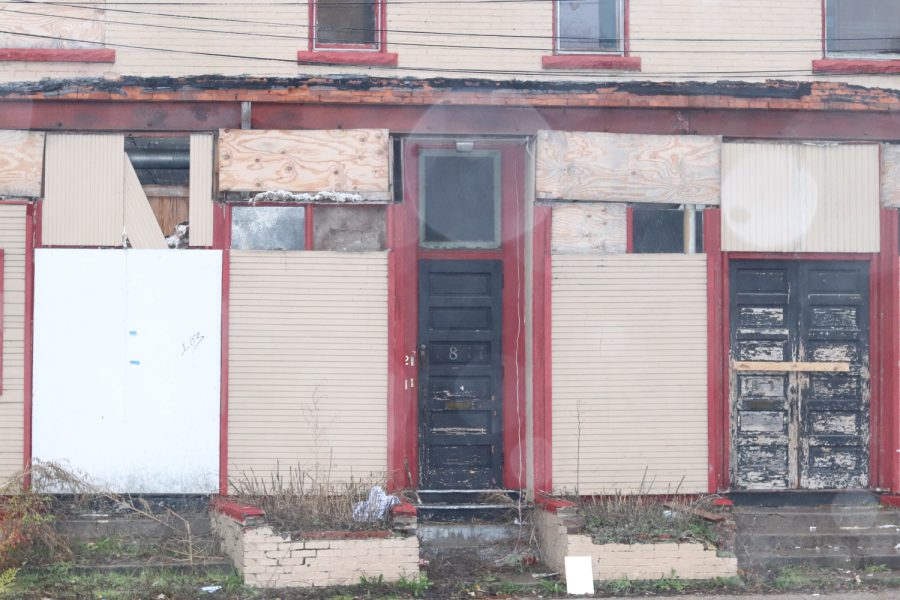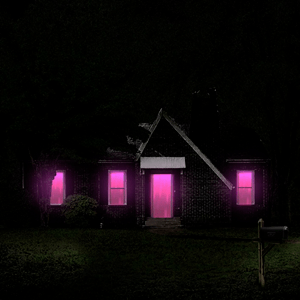We need to do more to provide affordable housing
Credit: August Crothers
Unused land stands in the Southside Neighborhood. According to Public Media Network, there are around 400 vacant parcels in Kalamazoo. Lots of this land is eligible to be repurposed or refurbished into usable housing.
December 1, 2021
On October 8th, KDPS officers entered the Ampersee Avenue homeless encampment with the intent to remove the residents. The resulting injuries, arrests, and displacements serve as an echo of the need for accessible, affordable housing.
Lack of access to affordable housing is an issue across the whole country, including Kalamazoo. According to the website Apartment Guide, on average rent prices have gone up by almost 20% this year. Along with this, the S&P Corelogic Case-Shiller Index has found the price to buy a home has increased by almost 20% since the start of this year.
These factors greatly contribute to making sure those below the poverty line are stuck in poverty.
It’s recommended that home buyers and renters should avoid spending more than 30% of their income on housing. This is impossible to follow for many Americans.
According to Harvard University in 2016, 38.1 million households spent more than 30% of their income. Even more upsetting, according to the same report, almost 10 million households spent more than 50% of their income on housing.
This issue is present in Kalamazoo. People are forced to spend too much of their income on housing. According to the census, the median monthly price of a mortgage and other housing expenses in Kalamazoo is $1,041, and the median household income is $41,774. This data shows that the yearly median household in Kalamazoo spends almost exactly 30% of their income on housing, and some pay much more than this.
These numbers strongly discourage people from taking the risk of purchasing a house because they might not be able to afford it. This has the effect of preventing people who don’t have wealth from being able to build wealth with property ownership.
“It [lack of access to housing] affects people across the board, lower and middle income.” said Theresa Oneil, communications manager of the Kalamazoo County Land Bank. “It affects wealth-building, stability of education, stability of mental health.”
Buying a home builds equity, which is the value of a home minus the amount of money that it was bought for. Renting means you don’t own the appreciating value of owning a home, the landlord does.
Being only able to rent and not buy a home, means that more money will pool to those who already have capital, furthering wealth disparity. This system ensures wealth will be continuously pooling upwards. Renters are forced to continue renting as prices of housing increase, and people with capital can continue to grow wealth through appreciation of the homes along with renting out to renters.
The first step in solving this issue is getting rid of exclusionary zoning, this means allowing multi-household units and apartments to be built in residential areas.
Although the idea behind exclusionary zoning was to lower the risk of fire hazards, these laws are used to maintain high prices in certain areas, keeping poorer people out of those neighborhoods. Not only this, but exclusionary zoning has been proven to disproportionately affect minorities due to redlining. This practice creates barriers between those who are well off and those who are affected by redlining and poverty.
Along with this, investing more money into funds and projects to construct affordable housing would help the issue. Recently Michigan governor Gretchen Whitmer proposed a $100 million dollar affordable housing project, which would be helpful for the problem.
Although more is being done to ensure money is allocated to creating and sustaining affordable housing, the problem will persist unless the root causes of wealth disparity are addressed and ownership of land is fairly distributed.













Courtney Russell • Dec 2, 2021 at 8:25 am
Great piece, Gus!